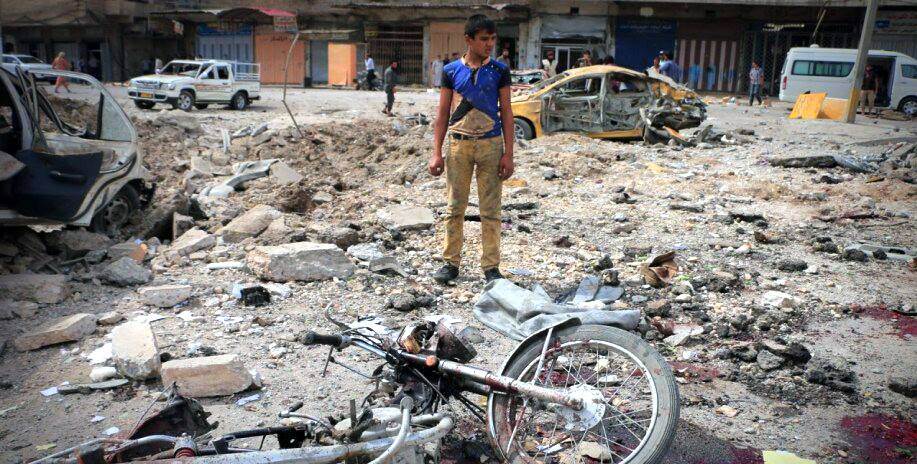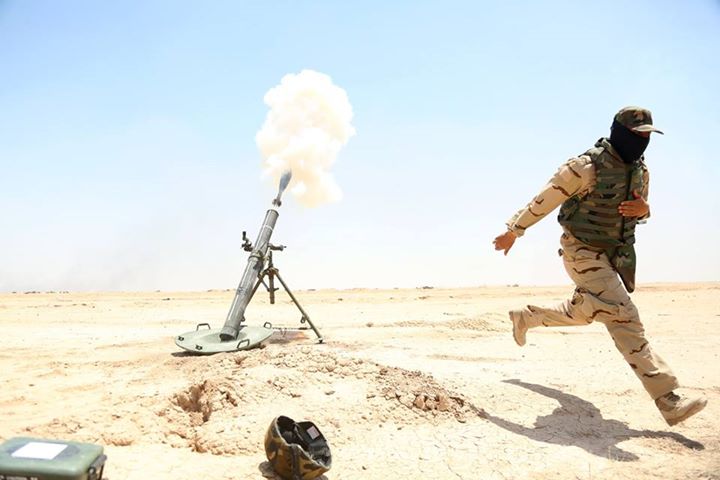
Casualty research by Latif Habib and Kinda Haddad

A US Air Force F-15E Strike Eagle pops a flare while departing after refueling over the Middle East (USAF/ Staff Sgt. Sandra Welch)
To the end of September 2015, Airwars had in total recorded 229 alleged civilian casualty incidents involving the Coalition dating back to August 2014. The overall alleged civilian fatality range was 621 to 1,859.
In the view of Airwars, 103 of these events are fairly reported and are of particular concern – with two or more sources and Coalition strikes confirmed in the near vicinity. Some 621 to 857 reported fatalities across Iraq and Syria were associated with these credible incidents.
In contrast, after 24,861 bombs and missiles dropped the Coalition has only conceded two ‘likely’ civilian deaths in Syria so far – and none in Iraq.
On September 18th at least 43 civilians were reported killed at Senyah in Iraq in a strike by unidentified aircraft. Tribal leaders called on the Baghdad government to “open an urgent investigation into the identity of the planes.”
On September 21st four members of a Mosul family – university professor Mohannad Al Rezzo; his 17-year old son Najeeb Mohannad Al Rezzo; Mr al Rezzo’s sister in law Miyada Rezzo and her 21-year old daughter Tuka all died in a reported Coalition strike which was initially ignored by international media. Yale professor Zareena Grewal later wrote of the deaths of her close relatives for the New York Times: “I desperately want the Islamic State to be defeated, but I wonder if our rage at it has made us blind to anyone we kill along the way, even those whose lives have been terrorized by the group.”
And on September 29th, a Coalition strike on a former Waqf [religious affairs] building in Mosul being used by Daesh also appears to have struck a nearby marketplace, killing between 11 and 29 non-combatants. Eyewitness Said Ali Mohammed, who works in the nearby market, told Gulf Online that he was inside his shop at the time, which is located just 500 meters from the Waqf building. He described the first explosion as “enormous… while we were preoccupied with tending to neighbors and some of the injured on the street, a second bombing targeted people who had rushed in to help the wounded.”
None of the towns targeted by Russia were occupied by Daesh despite the Kremlin’s insistence it had “performed high accuracy strikes against international terrorist organization ISIS.”
Aftermath of Russian strikes at Talbiseh, Sept 30th 2015
In Syria however, only 127 strikes were carried out – making September 2015 the second least intense month of bombings. The small city of Mar’a, north of Aleppo, was targeted by 28 strikes.

An Iraqi army soldier moves away from a 120 mm mortar he fires during training at Besmaya Range Complex, Iraq, (US Army/ Cpl. Nelson Rodriguez)
While the UK remained heavily committed in Iraq, the government had yet to win Parliamentary approval for strikes against Daesh in Syria. Conservative Chancellor George Osborne, referring to the current refugee crisis in Europe, said that this “problem” needed to be dealt “at source,” with Prime Minister David Cameron reportedly hoping to obtain Parliamentary authorisation for airstrikes.
However new Labour leader Jeremy Corbyn – historically anti-war – has said he can think of “no circumstances” under which he would back any UK military intervention in Syria. A previous attempt to authorise airstrikes (against the Assad regime) was defeated in Parliament 285-272, in August 2013.
Denmark’s F-16s also ended their year long engagement after plane mechanics appealed to the public, warning of ongoing stress and overwork at their base in Kuwait, as well as cracks in the planes.

Danish aircrew load a 2,000lb bomb onto an F-16 for its last Iraq mission (Danish MoD/Ronny Rasmussen)